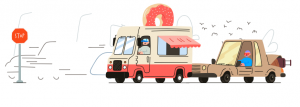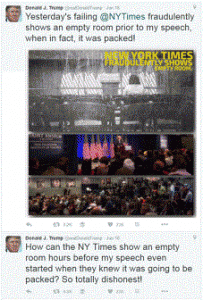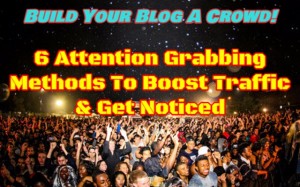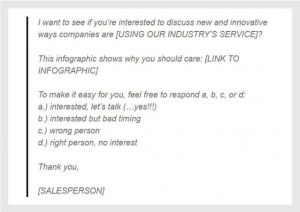
In the 90’s after internet advertisers filled all the ad space available and nearly ruined the online experience, a new phenomenon swept across the screen. This phenomenon was called “Banner Blindness.” It referred the fact that people learned what advertisements looked like and began to ignored them. This was the beginning of the end for banner ads on Yahoo. Google figured out that people will pay attention to (and click) ads that looked just like content. Thus, with Google Adwords, the age of native advertising was born.
Let’s fast-forward a handful of years. Using a Marketing Automation system, you could send a HTML-rich marketing email, and it was great! Early adopters, like Gary Vaynerchuk, touted he could get a 90+% open rates on an email. It typically had colors and logos and was easily recognizable. It was written with “marketing language.” However, just as consumers became immune to the original banner ads, this spray-and-pray marketing automation quickly became the banner advertising of emails. Now, click-through rates have plummeted to less than 3%. Reply rates are either not even allowed or less than 0.1%.
Recently with the new advent of sales automation, there is a new version of banner blindness in emails. They are not from marketing, but rather from the sales department. There is no real personalization and no thought put into them. As recipients, we are starting to recognize and ignore this kind of email content.
So, what do we do as businesses? The answer is clear. We have to get more natural and blend in with regular email. We have to become native to the inbox.
I believe you can get people to engage with your email and even reply at a rate much higher than the standard rates. The secret is constructing your email content in a more natural way.
I’ll try to illustrate:
Bad Email Play
- To: Glen
From: Sales personHi Glen,
I see that you are the {Being Natural in Sales Emails} of {{company}}. Can I interest you in my product?
[templated marketing nonsense] Cheers,
{{Signature of Sales person}}
- To: Glen
From: Sales personHi Glen,
Did you get my email? Were you abducted by aliens?
Concerned,
{{Sales Person}}
- To: Glen
From: Sales personGlen
Ok, I give up, you are obviously not interested!
Sad frowny face,
{{Sales person}}
Good Email Play
- To: Glen
From: Sales personGlen,
I saw on LinkedIn that you play tennis. Do you play in a USTA league?
I work at {{company}} and I’m supposed to email you and sell you, but I would rather just ask about tennis. I’m a 4.0 player myself.
Best,
{{Sales Person}}
P.S. I read your blog. I agree the electoral college is lame.
- To: Glen
From: Head of ProductGlen,
I’m the Head of Product at {{Company}}. {{Sales person}} mentioned to me about your blog. It’s cool. I specifically liked {{specific post and a relevant comment on the post}}.
Anyway, given what you do, I thought you would be interested in {{value proposition}}. I’m happy to share more details. Do you have some time in the Thursday or Friday morning to connect?
Thanks,
{{Head of Product}}
- To: Glen’s boss
From: Head of Sales{{Glen’s Boss}}
Hey, just fyi. We are going to invite Glen to a special event we are holding because of what he’s been doing around {{topic}}. He seems like a perfect fit and would add a lot of value to the conversation. Is this cool with you?
Sincerely,
{{Head of Sales}}
The difference between the two sets of emails:
Bad Good
| Generic language, weak use of title ☹ | Researched, natural language☺ |
| Single Target ☹ | Multiple Targets☺ |
| Single Sender ☹ | Multiple Senders☺ |
| Customized ☹ | Personalized☺ |
If you want to get people to reply and engage, then you need to act more naturally with them.
So what’s the problem?
The problem is that this technique takes time. It’s hard to scale. You need to search for relevant information to personalize and sometimes the person has a low profile online. Also, you need to change the current writing style, which is hard to roll out.
However, if it works, it works. Try it on your best Tier 1 target accounts. Try a test and see if the response rate is higher. The reality is that spray-and-pray isn’t a good strategy. It’s just spam. Don’t ruin the channel and the leads.
This blog post was written by a robot named X54. (Kidding!)
Be original. Be natural.
If you’re interested in being more natural and writing better cold sales emails, we’ve teamed up with Sales Hacker to bring you a new webinar around exactly that. Register now for How to Not Send Crappy Cold Emails on Dec. 8th at 10am PT.
Digital & Social Articles on Business 2 Community
(41)









